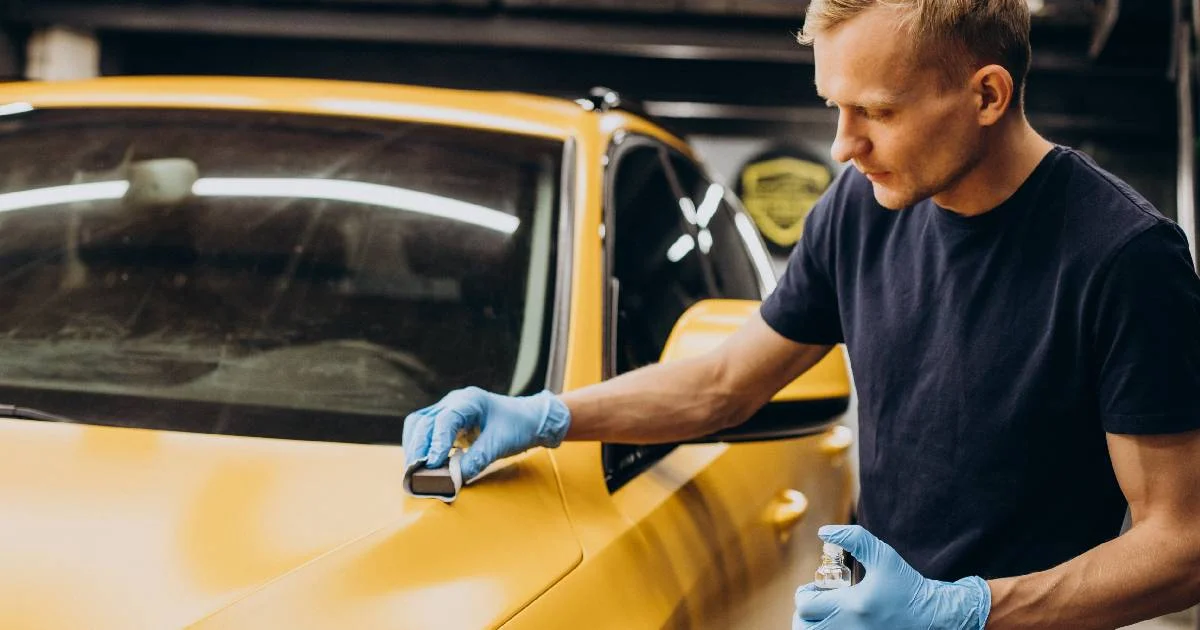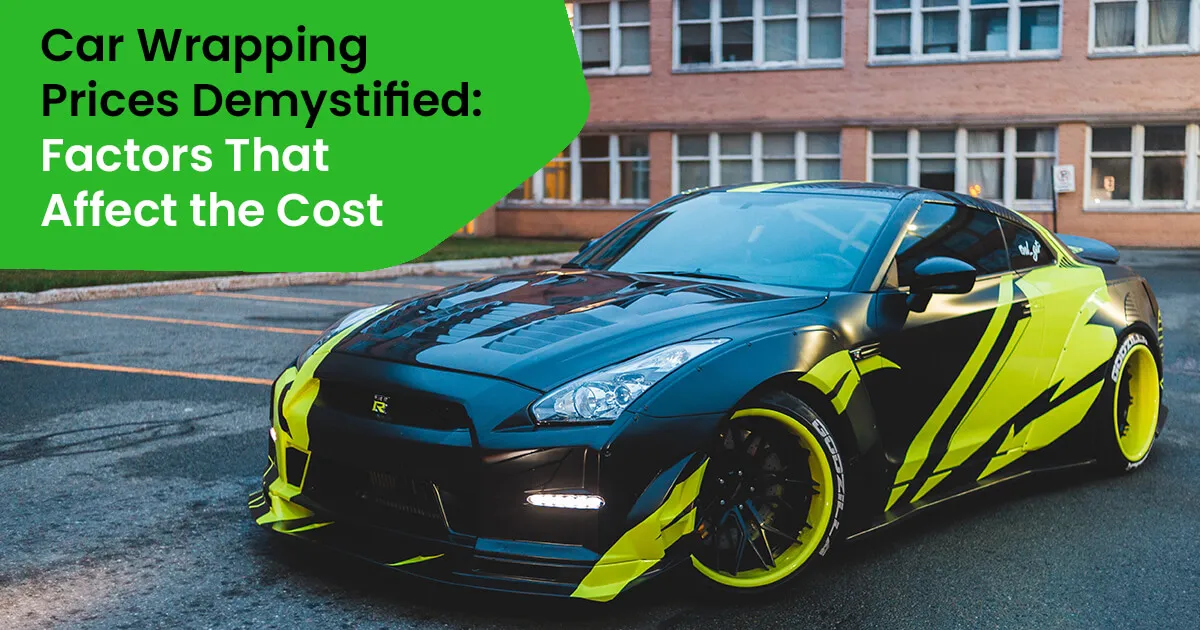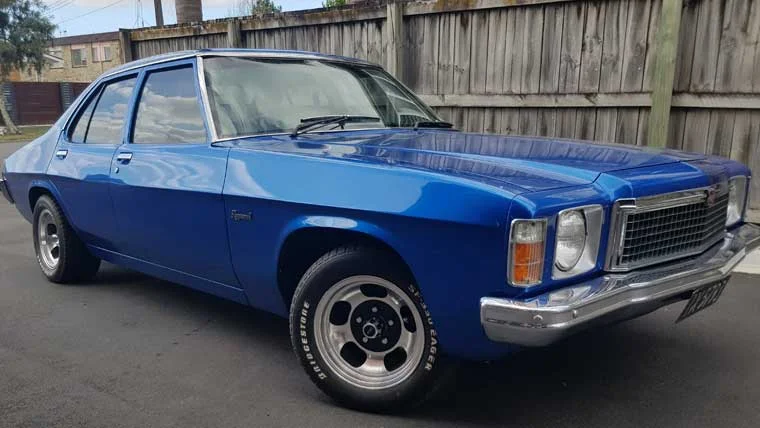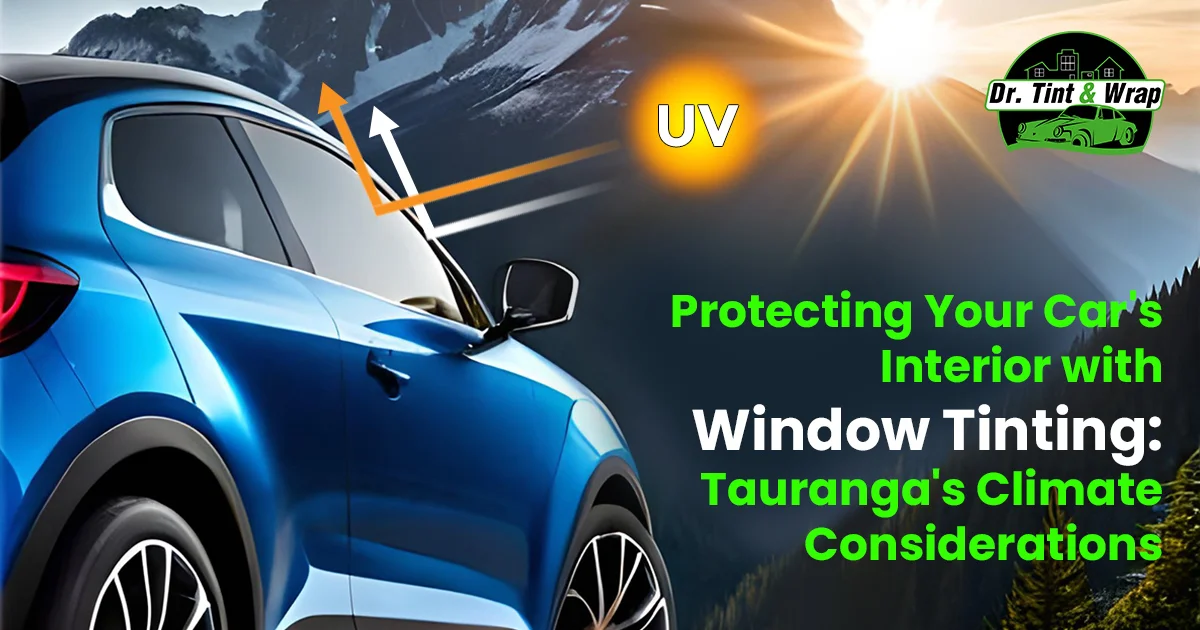
Is Ceramic Coating Good For Your Car ?
12 Feb 2024, By AdminIn the world of automotive care and detailing, ceramic coatings have gained immense popularity for their promise of providing long-lasting protection and a stunning, glossy finish for your vehicle. But is ceramic coating really worth the hype, and is it good for your car? Let's delve into the pros and cons of ceramic coatings to help you make an informed decision.
Pros
- Long-lasting Protection: Ceramic coatings create a durable and protective layer on your car's paintwork. This layer is resistant to various environmental contaminants such as bird droppings, tree sap, bug splatter, and harsh weather conditions. It helps prevent oxidation and fading, keeping your car looking newer for a more extended period.
- Enhanced Gloss and Shine: One of the most noticeable benefits of ceramic coating is the enhancement of your car's appearance. The coating provides a deep, glossy finish that can make your vehicle stand out and look freshly waxed at all times.
- Easy Maintenance: Ceramic coatings make cleaning and maintaining your car a breeze. The hydrophobic properties of the coating repel water and contaminants, reducing the chances of dirt and grime sticking to the surface. This not only makes washing your car easier but also less frequent.
- UV Protection: Ceramic coatings offer UV resistance, protecting your car's paint from the harmful effects of the sun. UV rays can cause paint to fade and deteriorate over time, and a ceramic coating acts as a barrier, preventing these damaging effects.
- Chemical Resistance: The coating provides a shield against various chemicals found in bird droppings, tree sap, and bug splatter. This chemical resistance ensures that these contaminants do not etch into the paintwork, minimizing the risk of permanent damage.
Cons
- Application Requires Skill: Applying ceramic coating is a meticulous process that requires skill and attention to detail. While some DIY kits are available, achieving professional-level results often requires experience and expertise. Improper application may lead to uneven coverage and reduced effectiveness.
- High Initial Cost: Quality ceramic coatings can be relatively expensive, especially when compared to traditional waxes and sealants. However, many enthusiasts argue that the long-term benefits and reduced maintenance costs justify the initial investment.
- Not Scratch-Proof: While ceramic coatings provide a protective barrier against many contaminants, they are not scratch-proof. They can resist minor scratches and swirls to some extent, but a high level of care is still necessary to avoid more significant damage.
- Limited Correction Abilities: Once applied, ceramic coatings are challenging to remove without professional intervention. Additionally, they have limited corrective abilities for existing paint imperfections such as scratches or swirl marks. Proper paint correction should be done before applying the coating for optimal results.
Is ceramic coating really effective in protecting your car's paint?
Yes, ceramic coating is highly effective in protecting your car's paint. It forms a strong, transparent layer on the surface of your vehicle that acts as a sacrificial barrier against various environmental contaminants. This includes dirt, bird droppings, tree sap, UV rays, and harsh weather conditions. The coating provides a durable shield that helps prevent oxidation and fading, keeping your car's paint looking glossy and vibrant for an extended period.
Does ceramic coating make my car completely scratch-proof?
While ceramic coatings do offer a higher level of scratch resistance compared to unprotected paint, they are not completely scratch-proof. The coating can withstand light scratches and swirl marks, providing an additional layer of protection. However, it is important to note that heavy or deep scratches can still occur, and it's advisable to avoid abrasive materials during cleaning to minimize the risk of scratches.
How long does ceramic coating last on a car?
The longevity of ceramic coating depends on various factors, including the quality of the product, application technique, and the maintenance of the vehicle. Generally, a professionally applied ceramic coating can last anywhere from one to five years. Regular maintenance, such as washing the car with pH-neutral soaps and avoiding abrasive cleaning methods, can help extend the lifespan of the coating.
Is ceramic coating worth the cost?
The cost of the ceramic coating varies depending on factors such as the product used, the size of the vehicle, and whether it's applied by a professional. While it is a significant upfront investment, many car owners find it worthwhile for the long-term benefits. The enhanced protection, ease of maintenance, and prolonged aesthetic appeal of the car can make ceramic coating a valuable investment for those who prioritize the appearance and longevity of their vehicle's paint.

Car Wrapping Prices Demystified: Factors That Affect the Cost
12 Feb 2024, By AdminCar wrapping has become an increasingly popular option for vehicle owners who want to give their cars a unique appearance or protect their original paintwork. However, one common question that arises when considering car wrapping is, "How much does it cost?" Car wrapping prices can vary significantly depending on several factors. In this blog post, we will demystify car wrapping prices and explore the key factors that influence the cost.
1. Type of Wrap Material
The choice of wrap material plays a crucial role in determining the cost of car wrapping. There are various options available in the market, ranging from basic vinyl wraps to premium-grade materials. The quality, durability, and finish of the wrap material directly affect the price. High- quality materials tend to be more expensive, but they offer better longevity and superior aesthetics.
2. Vehicle Size and Complexity
The size and complexity of the vehicle are essential considerations in pricing car wrapping services. Larger vehicles such as trucks, SUVs, or vans require more material and labor, resulting in higher costs compared to smaller cars. Similarly, vehicles with intricate body designs, curves, and contours demand additional time and expertise ensure a seamless installation, which can affect the overall pricing.
3. Partial or Full Wrap
Another factor that impacts car wrapping prices is whether you opt for a partial also known as only roof and bonnet wrap or full wrap. A full wrap covers the entire vehicle, including the roof, hood, trunk, and all the body panels. Partial wraps, on the other hand, cover only specific areas of the car. Naturally, a full wrap requires more material and labor, leading to a higher cost compared to a partial wrap.
4. Custom Design and Graphics
If you desire a customized design or graphics on your car wrap, the cost will be influenced by the complexity and intricacy of the design. Custom artwork, logos, or intricate patterns require specialized skills and precision, which may result in additional charges. The more detailed and elaborate the design, the higher the cost will be.
5. Additional Services
Additional services, such as surface preparation, paint protection, and removal of previous wraps, can also impact the overall car wrapping price. Proper surface preparation, including cleaning, degreasing, and removal of any contaminants, is vital for achieving a smooth and long-lasting finish. Paint protection films or clear coats may be recommended to enhance the durability of the wrap, but they can add to the cost.
6. Geographic Location
Car wrapping prices can also vary based on the geographic location. Costs tend to be higher in urban areas or regions with a higher cost of living. Additionally, market competition and local demand can influence pricing. It is advisable to research multiple providers in your area to get a better understanding of the prevailing rates.
Car wrapping prices can vary significantly depending on various factors such as the type of wrap material, the size and complexity of the vehicle, the extent of coverage, custom design requirements, additional services, and geographic location. It is crucial to consider these factors when estimating the cost of car wrapping. To ensure a successful and satisfactory outcome, it is recommended to consult with professional car wrapping providers who can provide accurate pricing information based on your specific requirements. Dr. Tint stands out as a leading provider of top-notch car and vehicle wrapping services, offering the best quality and competitive prices in Hamilton, Rotorua, and Tauranga. Remember, investing in quality materials and expert installation is key to achieving a stunning and long-lasting car wrap.

4 Benefits Of Vehicle Window Tinting
12 Feb 2024, By Admin1. Keeps it from fading
The car is the most valuable asset that you can have and you want it as long as possible, having the perfect professionally installed tint on the car is to protect your asset, using a windshield sun protector or parking your car in the shade can reduce the sun damage for a short period of time, window film always blocks harsh rays of the sun which can fade upholstery and discolor leather and the vinyl, it also helps the car from not cracking and wrapping to keep your car looking new for a long period of time, the window tinting also blocks windshield glare to decrease eye fatigue from direct sun and the headlights at night,
2. Blockage from Harmful rays
By tinting your window can block up to 99 percent of the sun's harmful ultraviolet rays which have shown to accelerate skin aging and cause skin cancer, the UV rays can form electromagnetic radiation, if exposed over a long period of time which can result in skin burns, darkening the skin, premature aging, and skin cancer, even a clear window film or a light film can protect UV protection that is capable of blocking UVA and UVB which are both damaging rays, according to research 53% of skin cancer in The United States is caused on the left side, which is linked for the driver is on the left side of the car for a long period of time
3. The coolness effect
With Window tinting, the cooling in the car is right for all its passengers applying a window tint will solve the issue, this can block the solar heat that builds in the car by up to 65%, you can balance climate and comfort for all the passengers this will help cut down fuel consumption from the overuse of air conditioning
4. The Tint Benefits
There are many safety benefits by installing a window film and it can't is underestimated, they are designed to keep the glass from shattering in case an object hits, if there is a car accident the passengers are protected from pieces of flying glass and from being ejected from the windows, it also protects it from thieves as they will find it difficult to break the tinted glass windows.
By applying a window tint , you’re making the most out of your car, making sure it is in the long run and helping it by putting protection that will protect it from the damage and harmful rays of the sun.
Dr Tint is a leading Automobile Window Tinting Company in Hamilton, New Zealand.
Book Now

Protecting Your Car's Interior with Window Tinting: Tauranga's Climate Considerations
12 Feb 2024, By AdminWhen it comes to protecting your car's interior, investing in window tinting is an excellent choice. Not only does it enhance your vehicle's appearance, but it also provides numerous benefits, especially in a city like Tauranga, where the climate can be intense. In this article, we will explore the advantages of car window tinting and discuss why it's crucial to consider Tauranga's climate when choosing the right tint for your car.
1. Preserving Your Car's Interior
Tauranga's climate, known for its sunny and hot summers, can take a toll on your car's interior. The constant exposure to harsh UV rays can cause fading, cracking, and discoloration of your car's upholstery, dashboard, and other interior components. Car window tinting acts as a protective shield, blocking up to 99% of harmful UV rays, thereby preserving the integrity and aesthetics of your vehicle's interior.
2. Heat Reduction
During Tauranga's scorching summers, the inside of your car can become unbearably hot, making it uncomfortable for both you and your passengers. Window tinting helps in minimizing heat build-up by blocking a significant amount of solar energy. By reducing the amount of heat that enters your vehicle, window tinting keeps the interior cooler, making your driving experience much more pleasant.
3. Glare Reduction and Enhanced Visibility
Glare from the sun can be a major distraction while driving, increasing the risk of accidents. Car window tinting reduces glare by effectively filtering the amount of light entering your vehicle. With reduced glare, you'll experience enhanced visibility, especially during sunrise, sunset, and bright sunny days, allowing you to focus better on the road and ensure a safer driving experience.
4. Privacy and Security
Window tinting adds an extra layer of privacy and security to your vehicle. It prevents prying eyes from easily seeing the contents of your car, reducing the chances of theft or break-ins. Additionally, if your window is ever shattered, the tint film helps hold the glass together, minimizing the risk of shattered glass shards inside the vehicle.
5. Protecting Your Health
The harmful UV rays that penetrate through windows not only damage your car's interior but can also pose health risks to you and your passengers. Prolonged exposure to UV rays can lead to skin damage, premature aging, and even an increased risk of skin cancer. Car window tinting acts as a sunscreen for your vehicle, protecting you and your loved ones from these harmful rays, and ensuring a safer and healthier driving environment.
Car window tinting is an essential investment for any vehicle owner in Tauranga, given the city's climate and the potential hazards it presents. By opting for window tinting, you can protect your car's interior from fading, cracking, and discoloration, while also enjoying the benefits of reduced heat, glare, increased privacy, and enhanced security. Moreover, the added protection against harmful UV rays ensures a safer and healthier driving experience for you and your passengers.
When considering car window tinting, it's crucial to consult a professional tinting service that can provide guidance based on Tauranga's climate and local regulations. Dr. Tint & Wrap is locally owned and specializes in car window tinting, offering top-quality services in Tauranga. Their expert tinting solutions effectively protect your car's interior while providing the best window tinting options available. By choosing the right tint and having it professionally installed, you can enjoy all the advantages while complying with the laws. Invest in car window tinting today with Dr. Tint & Wrap and safeguard your vehicle's interior, comfort, and overall driving experience in Tauranga's challenging climate.
